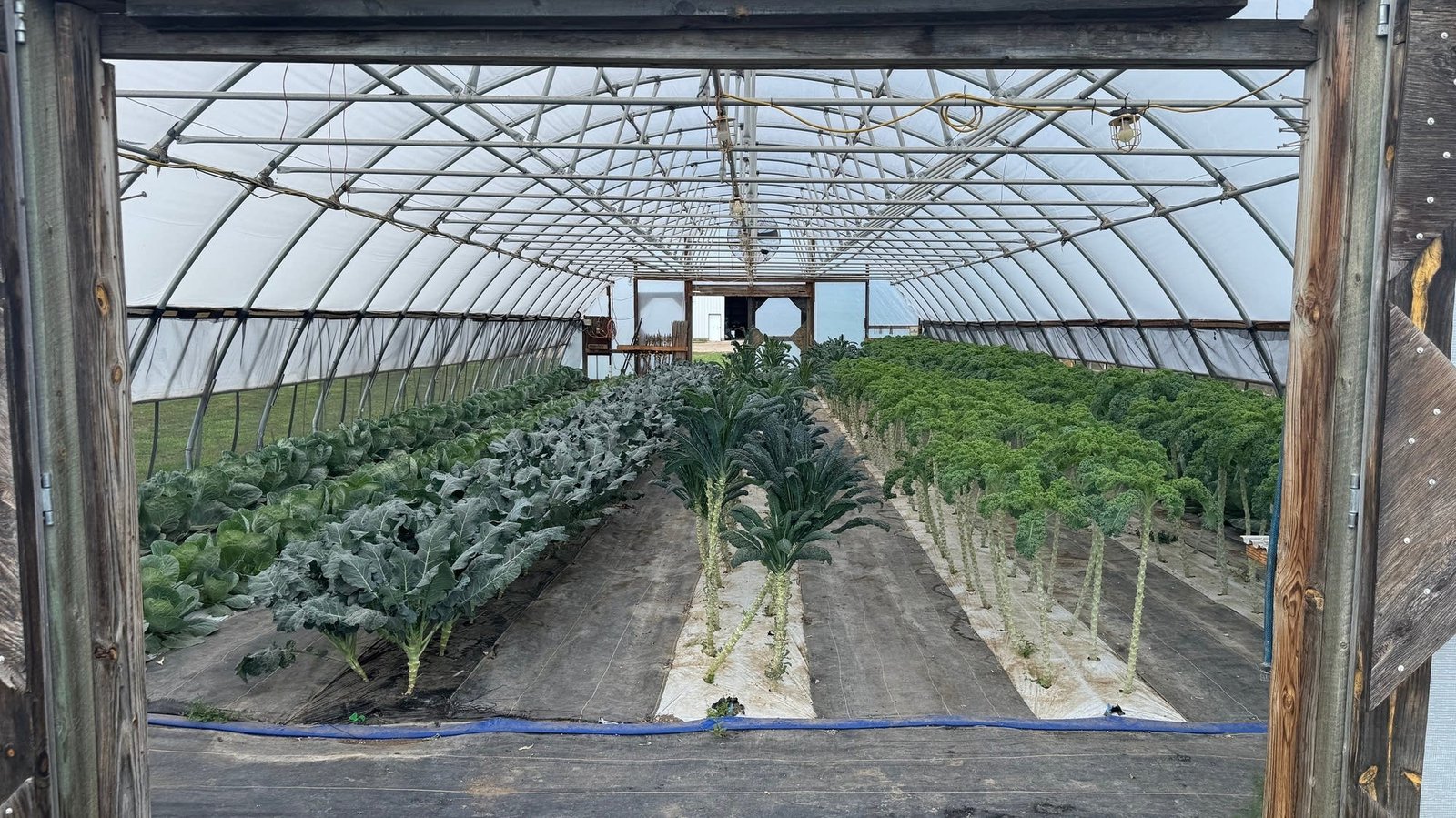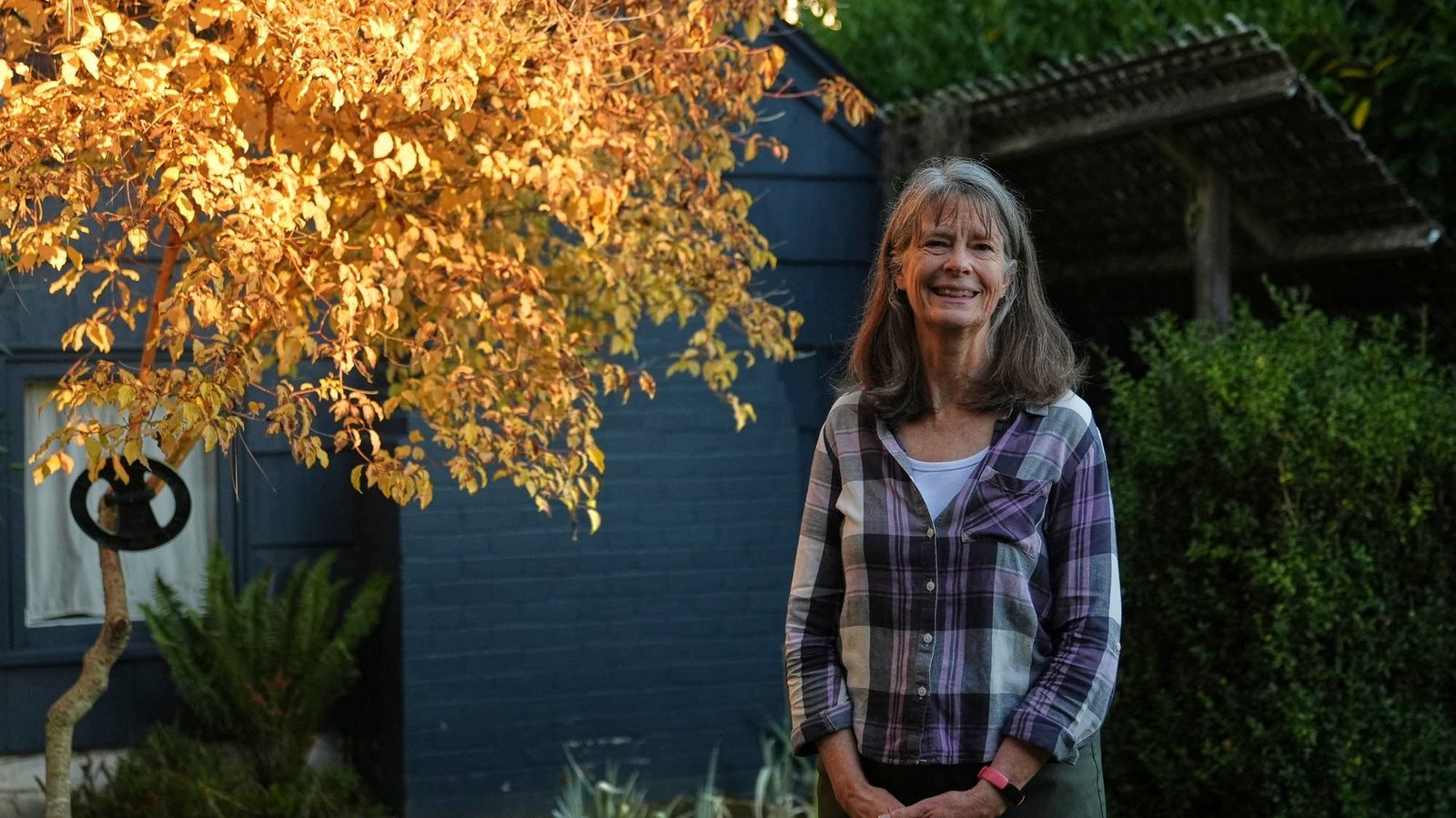
Tunnel farming helps South Dakota farmers extend the growing season by up to 4 months
When snow covers the frozen ground, and most South Dakota farmers sell or store their produce for the season, Cedar Creek Garden operators are still able to grow vegetables and reap a profitable crop.
Located in a remote area southwest of Murdo, about 12 miles south of Interstate 90, the sprawling farm is one of dozens in the state that use so-called farm tunnels to extend planting and growing seasons.
Tunnels are fortified above-ground structures covered with plastic that absorbs heat from the sun, creating a greenhouse effect. Many tunnels in Cedar Creek They are covered with two separate layers of plastic and have fans that circulate warm air between the layers, creating warmer growing conditions.
Tunnels differ from greenhouses in that crops are grown directly in the soil rather than in boxes or raised beds, and they are watered from the ground rather than above.
Cedar Creek is managed by Peggy Martin and Bud Manke, business partners and good friends. Martin and Mankey were among the first farmers in South Dakota to install tunnels after reading about them online in the early 2000s.
“At first, we were just going to grow food for our families,” Martin said. “But it became a passion, and (the tunnels) helped us grow to where we are now.”
In addition to extending the growing season by up to four months each year, controlled weather conditions and targeted water use also allow them to produce high-quality organically grown vegetables.
One-pound tomatoes are firm, full of nutrients, and blemish-free. Banana peppers are as long as bananas and are very crunchy. Sweet onions the size of softballs. Cabbage plants that reach 5 feet in height.
Tunnels are part of a diverse process
On their farm, they grow crops on 14 acres, have about 1,400 free-range chickens, and Mankey raises livestock. The farm is dotted with about ten tunnel buildings, the largest of which is 14 feet high, 30 feet wide and 200 feet long.
Martin said the tunnels have enabled them to expand their farm and production over the past 25 years and helped them grow into the largest specialty farming operation in South Dakota west of the Missouri River.
Martin, Mankey and the farmworkers they employ grow a wide range of seasonal produce, including tomatoes (the primary cash crop) as well as squash, watermelon, sweet and green onions, red and green peppers, kale, cabbage, cauliflower, sugar snap peas, radishes, lettuce and zucchini.
The foods they grow and raise are sold at area farm stands and farmers markets but also through a weekly wholesale trade serving West River grocery stores, restaurants and group buyers.
The tunnels allowed them to plant vegetables as early as March and keep some delicious varieties growing for harvesting until mid-December. Mank said the first frost date in their area is usually around Sept. 15.
“It can snow here in the winter, and it’s 20 degrees when the sun shines, but it can get up to 100 degrees inside the tunnels,” Manke said. “It can get very hot at times, so we have to be careful and keep things open.”
Higher productivity and higher profits
Martin did the math to show how spending can increase productivity and profits.
In a 200-foot tunnel, they can fit three rows of 100 tomato plants, each of which can produce 40 pounds of fruit, more than twice as much as a typical house tomato plant, she added. At an average of $2.25 per pound, and even with 20% waste, this single tunnel can produce $21,600 worth of tomatoes in one grow-out operation.
Rachel Lawton, an urban conservationist in South Dakota for the USDA’s Natural Resources Conservation Service, runs the federal program that provides financial assistance to eligible individuals and operations that want to establish tunnel farms.
Lawton, who is based in Sioux Falls, said the tunnels are not suitable for high-production farms that produce thousands of bushels of corn, soybeans or wheat. But she said it works well for specialty crop growers or backyard gardeners who want to produce a stable crop of vegetables almost year-round.
“Extending the season with high tunnels is beneficial, but even more so when you look at the quality of the produce they produce while also getting protection from wind, hail, frost, chemical drift and pests,” she said.
NRCS Lawton said the company accepts applications for financial assistance in developing Tunnel Gardens each fall, with recipients receiving up to 75 percent of the project cost. In addition, successful applicants receive NRCS assistance in developing a broad conservation plan for their commercial farms or home gardening projects.
Interest in tunnels growing in South Dakota
Lawton said she has seen increased interest in tunnel farming in South Dakota in recent years.
In recent years, the agency has provided funding for about 10 to 15 tunnel projects annually with money from the USDA’s Environmental Quality Incentives Program, or EQIP.
The largest tunnels, about 3,000 square feet, can cost more than $20,000, although smaller tunnels with fewer facilities cost much less, Lawton said. Tunnels cannot be used to store equipment or handle livestock, and applicants for NRCS must own or lease land, be U.S. citizens and earn less than $900,000 annually, she said.
Lawton warned that people considering building tunnels should be aware that they require frequent maintenance and are vulnerable to damage from the elements.
“As wonderful and wonderful as it is, I can’t say it’s the answer to everything,” she said. “There can be a lot of pitfalls and a lot of work if you’re not an experienced farmer.”
Martin is now the “resident expert” on the tunnels
Tunnels come in three basic sizes, from “high tunnels” which are the longest and widest, to “larval tunnels” which are shorter and narrower, to “low tunnels” which are light enough to lift and change positions quickly.
Lawton refers to Martin as South Dakota’s “resident high tunnel expert” because she has more high tunnels than most South Dakota farmers and because she has spent more than two decades operating them.
Martin likens tunnels to “problematic two-year-olds” who need patience and wisdom to manage them properly. “You can’t plant it and then leave the house,” she said. “If bad weather is coming, you roll over to the sides and button up.”
But for those who accept the hard work and risk, the payoff in an extended growth period, improved product quality and protection of natural resources can far outweigh those drawbacks, Lawton said. She said the benefits of conservation include soil conservation and reduced use of water, pesticides and electricity.
“You can do a succession of crops, you have a better growing environment, which basically translates into dollars because you can grow more and sell more or grow more food for your family,” Lawton said. “It all starts with rationalization, but the end product is something that is both more efficient, more productive and more financially beneficial at the same time.”












Post Comment